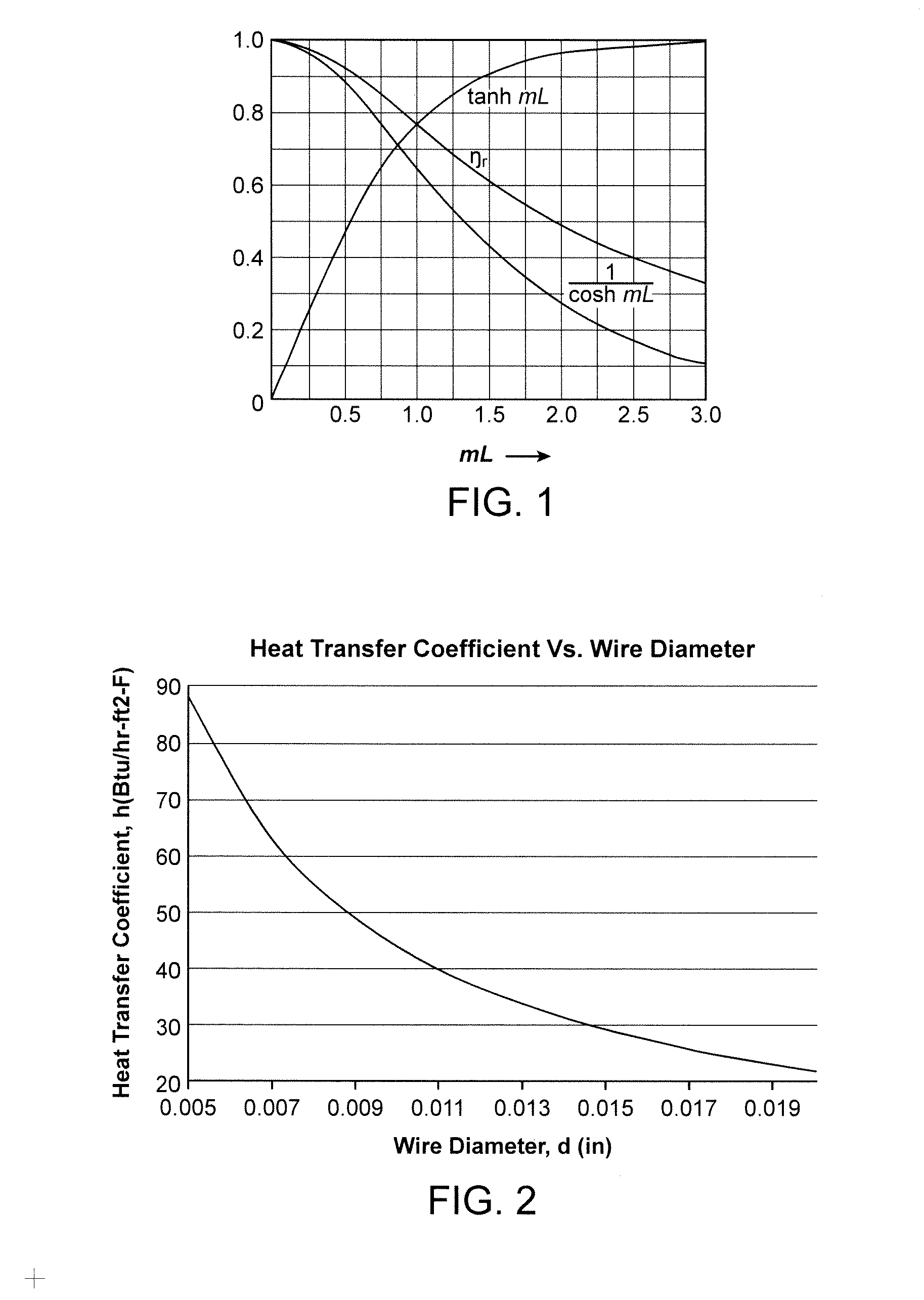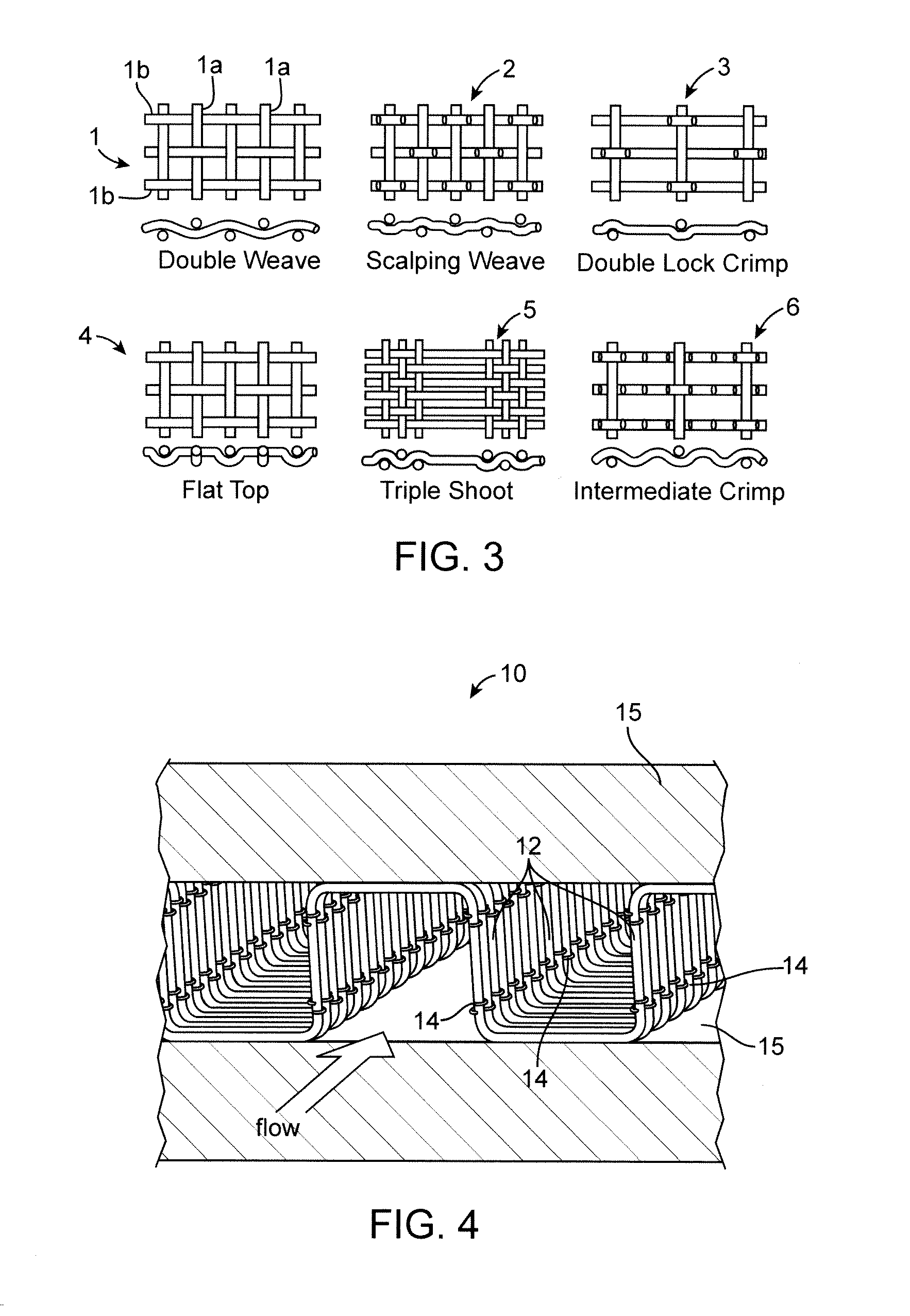Non-Isotropic Structures for Heat Exchangers and Reactors
- Summary
- Abstract
- Description
- Claims
- Application Information
AI Technical Summary
Benefits of technology
Problems solved by technology
Method used
Image
Examples
Example
[0031]Theory
[0032]Through recent investigations of foams and other enhanced heat transfer methods, it has been concluded that a primary limitation of foam is a result of its isotropic nature. Heat transfer from a sink to air has to occur via heat flow from the source through structures that reach out into the air-flow. These structures can be a bottleneck to heat transfer, which is commonly termed “low fin effectiveness”. FIG. 1 presents fin effectiveness results, Nr, as a function of mL, where L is the length of the fin and m is a key parameter defined for a pin fin as m=(4h / kd)1 / 2, where h is the gas heat transfer coefficient, k is the thermal conductivity of the fin material and d is the diameter of the pin.
[0033]As shown in FIG. 1, as the fin length L increases, the effectiveness decreases. This is a measure of the effectiveness of the fin surface area versus the area through which the heat passes to the separation plate and adjoining heat transfer fluid, or primary surface area...
PUM
| Property | Measurement | Unit |
|---|---|---|
| Thickness | aaaaa | aaaaa |
| Flow rate | aaaaa | aaaaa |
| Diameter | aaaaa | aaaaa |
Abstract
Description
Claims
Application Information
 Login to View More
Login to View More - R&D
- Intellectual Property
- Life Sciences
- Materials
- Tech Scout
- Unparalleled Data Quality
- Higher Quality Content
- 60% Fewer Hallucinations
Browse by: Latest US Patents, China's latest patents, Technical Efficacy Thesaurus, Application Domain, Technology Topic, Popular Technical Reports.
© 2025 PatSnap. All rights reserved.Legal|Privacy policy|Modern Slavery Act Transparency Statement|Sitemap|About US| Contact US: help@patsnap.com



